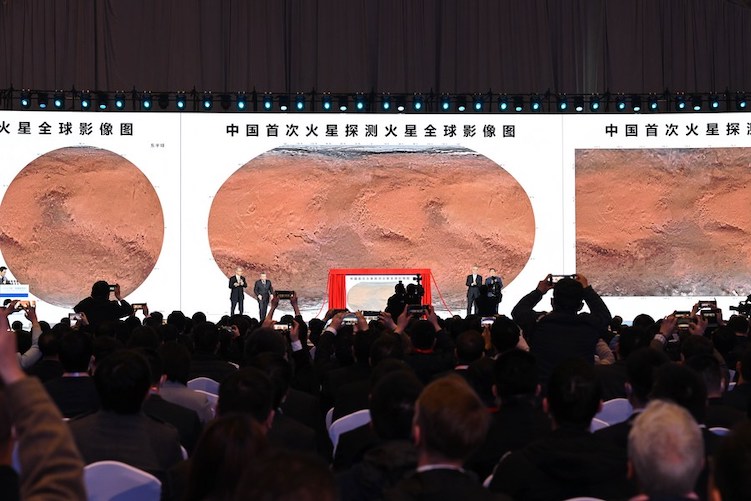China is looking to build satellites in coming years to communicate with missions to the moon and further into deep space, state media said on Wednesday.
The first satellite, expected to be launched next year, aims to relay communications between the far side of the moon and earth.
It would support the country’s lunar exploration and the building of the International Lunar Research Station, Xinhua news agency reported, citing Wu Yanhua, head designer of China’s deep space exploration project.
China plans to launch the Chang’e-6 mission to retrieve lunar samples from an ancient basin in the far side of the moon in 2024 and wants the first satellite to support uncrewed lunar missions this decade.
ALSO SEE:
China Says ‘Unforeseen’ Dust Pile-Up Behind Idle Mars Rover
Deep space missions planned after 2040
A Chang’e-7 mission will then be launched around 2026 to explore lunar resources on the moon’s south pole, with the aim of sustaining long-term human habitation.
That will be followed by the Chang’e-8 mission around 2028, when a basic model of the lunar research station will be built. So far, China has secured participation from Russia and Venezuela.
China’s mid-term goal is to land astronauts on the moon by 2030.
In a subsequent 10-year phase to 2040, a basic satellite network would be constructed to support communications, navigation and remote-sensing services for manned lunar and deep space exploration missions to planets such as Mars and Venus, Wu said.
In 2020, the uncrewed Chang’e-5 probe, named after the mythical Chinese goddess of the moon, brought back lunar soil samples to China for the first time.
China made its first lunar landing in 2013, and aims to be a major space power by 2030.
These plans were spelt out at the International Deep Space Exploration Conference, hosted this week by the Deep Space Exploration Laboratory, as one of a key activity to celebrate Space Day in China, which falls on April 24 (last Monday).
The two-day event drew hundreds of guests from 14 countries and regions, Xinhua said.
Japanese moon craft likely crashed
Meanwhile, in related news, a Japanese company funding a private moon landing says its spacecraft is likely to have crashed.
Tokyo-based iSpace said it lost communication with Hakuto-R shortly before it was due to touch down at 16:40 GMT on Tuesday. Engineers were trying to work out what happened.
The moon landing craft, launched by a SpaceX rocket in December, was aiming to release an exploratory rover and deploy equipment to analyse lunar soil, its geology and atmosphere.
To date, only government-backed missions by the United States, Russia and China have managed to put a robot on the surface of the moon.
- Reuters with Jim Pollard
NOTE: Details on the Japanese moon lander were added to this report on April 26, 2023.
ALSO SEE:
China Seeking Ways to Take Out or Control Enemy Satellites
China’s Low-Earth Satellites Push in Starlink Catch-Up Bid
Musk’s Starlink Spurs Taiwan Satellite Internet Plan – Fortune
South Korea Joins Asian Space Race With Satellite Launch























